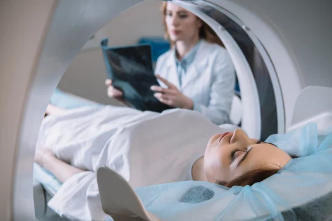Magnetic Resonance Imaging (MRI) is one of the most powerful diagnostic tools in modern medicine, offering unparalleled detail in visualizing soft tissues, organs, and complex anatomical structures. However, the true value of MRI lies not only in the data captured but in how that data is processed, displayed, and interpreted. This is where MRI visualization software comes in—transforming raw scan data into interactive, clear, and clinically actionable images.
For medical professionals, choosing the right MRI visualization tool can significantly impact diagnostic accuracy, workflow efficiency, and even patient outcomes. In this guide, we explore the top MRI visualization software solutions available today, their key features, and how they are shaping the future of medical imaging.
Why MRI Visualization Software Matters
While MRI scanners produce highly detailed images, the raw data often requires sophisticated processing to become clinically useful. Visualization software enables:
- 3D reconstruction for improved anatomical understanding.
- Multi-planar reformatting (MPR) to view structures from different angles.
- Quantitative analysis to measure volumes, densities, and flow rates.
- Integration with AI for automated detection and annotation of abnormalities.
By enhancing clarity, interactivity, and accessibility, these tools empower radiologists, surgeons, and researchers to make more informed decisions.
Key Features to Look For in MRI Visualization Software
When evaluating MRI visualization platforms, medical professionals should consider:
- Compatibility – Support for DICOM and integration with PACS systems.
- 3D and 4D Capabilities – For dynamic imaging of moving structures like the heart or joints.
- AI Assistance – Automated lesion detection, segmentation, and measurement.
- Cross-Platform Access – Availability on desktop, web, and mobile devices.
- Collaboration Tools – Real-time data sharing and annotation for multi-disciplinary teams.
- Regulatory Compliance – FDA, CE, or other medical device certifications.
Top MRI Visualization Software for Medical Professionals
1. OsiriX MD
Best for: Radiologists and researchers needing advanced image manipulation.
- Highlights:
- FDA-cleared and CE-certified for medical use.
- Supports 3D and 4D imaging, including functional MRI (fMRI).
- Extensive plug-in support for custom workflows.
- Pros: Intuitive interface, high-speed rendering.
- Cons: Mac-only; requires annual license renewal.
2. RadiAnt DICOM Viewer
Best for: Fast, lightweight viewing on Windows systems.
- Highlights:
- Supports multi-monitor setups.
- 3D volume rendering, MPR, and maximum intensity projection (MIP).
- No installation required—portable version available.
- Pros: Quick loading, easy navigation.
- Cons: Limited AI features compared to premium solutions.
3. 3D Slicer
Best for: Open-source flexibility and research projects.
- Highlights:
- Free and cross-platform (Windows, Mac, Linux).
- Customizable modules for segmentation, registration, and visualization.
- Strong developer community.
- Pros: Highly versatile, ideal for research and education.
- Cons: Steeper learning curve for beginners.
4. syngo.via (Siemens Healthineers)
Best for: Hospitals using Siemens imaging equipment.
- Highlights:
- Tight integration with Siemens MRI scanners.
- AI-powered lesion detection and automated workflows.
- Cloud-based collaboration features.
- Pros: Seamless workflow for Siemens users.
- Cons: High cost, proprietary ecosystem.
5. GE AW Server
Best for: Multi-specialty diagnostic centers.
- Highlights:
- Advanced cardiac and neuroimaging modules.
- Supports quantitative analysis and perfusion imaging.
- Web-based access for remote reading.
- Pros: Reliable performance, strong vendor support.
- Cons: Requires GE infrastructure for full functionality.
6. Philips IntelliSpace Portal
Best for: Integrated enterprise imaging environments.
- Highlights:
- Multi-modality visualization (MRI, CT, PET).
- AI-driven workflow automation.
- Cloud-enabled collaboration tools.
- Pros: Excellent for large hospitals and research institutions.
- Cons: Complex deployment, premium pricing.
7. Intrasense Myrian
Best for: Oncological and chronic disease monitoring.
- Highlights:
- Special modules for oncology, cardiology, and neurology.
- Quantitative lesion tracking over time.
- Multi-platform support.
- Pros: Strong focus on longitudinal studies.
- Cons: Less known in North American markets.
The Future of MRI Visualization
With advancements in artificial intelligence, cloud computing, and extended reality (XR), the next generation of MRI visualization software will likely include:
- Fully immersive AR/VR environments for surgical planning.
- Real-time collaboration in the metaverse for remote consultations.
- Predictive analytics to forecast disease progression.
- Haptic feedback integration for simulation-based training.
Conclusion
For medical professionals, the choice of MRI visualization software is no longer just about image clarity—it’s about speed, collaboration, AI integration, and patient engagement. Whether you opt for a lightweight viewer like RadiAnt, an open-source powerhouse like 3D Slicer, or a fully integrated enterprise platform like IntelliSpace, the goal is the same: to unlock the full diagnostic and educational potential of MRI scans.
The right software can transform an MRI from a static image into a dynamic, interactive, and insight-rich experience—improving outcomes for patients and enhancing the capabilities of medical teams.
Also Read :
